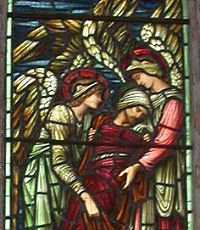A Medieval Plague: The Black Death
The Black Death is probably the most well-known killer from that era and we'd like to share with you a story about a small English market town in the Lake District called Penrith.
In 1597 Andrew Hodgson crossed over the Pennines, probably from Richmond in Yorkshire and brought with him the Black Death. (It had already been terrorising Europe for 250 years when this happened!). This was a cruel blow for the people of Penrith as the previous year a famine had killed 153 people and the population had been weakended considerably. The cold winter did not wipe out the disease and during 1598 over half the population died. There is still talk of plague stones and the horrors which were brought to Cumbria and the Eden Valley.
So what exactly was the Black Death? For many years everyone thought it was the bubonic plague brought by fleas and their rat hosts. However, Scott & Duncan in their book "The Return of the Black Death" argue that it was a haemorrhaging virus, not dissimilar to Ebola, which brought so much death to the land.
We will talk more about their findings and the impact of the Black Death on medieval life at a later date but for now most people simply do not recognise how prosperous 21st century life and the horrors of the past could share some frightening similarities.
Labels: Black Death, medieval life, Penrith
